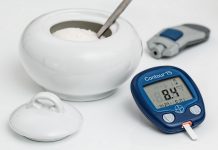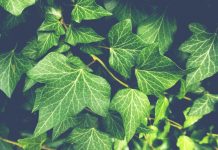
No. Just cutting out sugar and sweets isn’t enough for a person with diabetes to control his or her blood sugar. This total food intake for the day and especially the amount of carbohydrate should be determined to reach a healthy weight and include 30 minutes of activity each day. It should also take into account his food preferences and eating habits.
For instance, if his prescribed diabetic meal plan was for 1800 calories and he only ate two meals of 900 calories each, his blood sugar would probably go higher than desired. Instead, if he ate 3 meals and 1 or 2 snacks, the calorie content at each meal would be much lower at around 500 calories. Also, his blood sugar would be more likely to stay within desired ranges of less than 140 milligrams per deciliter two hours after meals.
The diabetic exchange list groups foods together that have similar protein, fat and carbohydrate content. The exchange list is the basis for carbohydrate counting now used in diabetic eating plans. Now you can exchange starches, milk, and fruit for each other at a meal because they have the same carbohydrate content per serving.
For instance, the fruit exchange includes all fruits that have 60 calories and 15 grams of carbohydrate per serving. Unfortunately, nature did not put the same amount of carbohydrates in each kind of fruit, so the serving size varies between fruits.
The milk exchange includes fluid milk (fat-free skim, buttermilk or soymilk), plain yogurt and plain kefir. One milk exchange has 15 grams of carbohydrate, 8 grams protein and 0 (skim or fat-free) to 3 grams fat (1% or low-fat versions) with 90 to 100 calories. Reduced fat 2% milk has an additional 1 fat exchange and whole milk an additional 1 1/2 fat exchanges compared to skim milk. Imagine 1 teaspoon or 1 1/2 teaspoons of butter floating in reduced fat or whole milk. So if you drink reduced fat or whole milk, you will need to deduct some fat exchanges from your meal plan to account for the fat if you drink reduced fat or whole milk.
The starch exchange includes bread, cereal, rolls, crackers and starchy vegetables like corn, peas, winter squash, and potatoes. One starch exchange has 15 grams of carbohydrate, 3 grams of protein and a trace of fat with 80 calories.
Doctors and dietitians have used the exchanges (milk, vegetable, fruit, starch, meat, and fat) nationwide to simplify diabetic eating plans. The exchange list has evolved into carbohydrate counting where a serving of a food with 15 grams of carbohydrate is called a carbohydrate choice. It is easy to keep track of your carbohydrate choices when you have 2 to 4 per meal and 1 to 2 per snack. Counting calories while eating is very time consuming and tedious. An exchange list eating plan will present you with variety and more likely, an adequate amount of vitamins and minerals.
It sounds like you have some more unanswered questions. I would suggest, you both see a dietitian again to answer them. Your husband needs to know what and how much he can eat. You both need to know what and how much to cook. Once you get used to using exchanges, I believe, you will rely on them for every meal.


